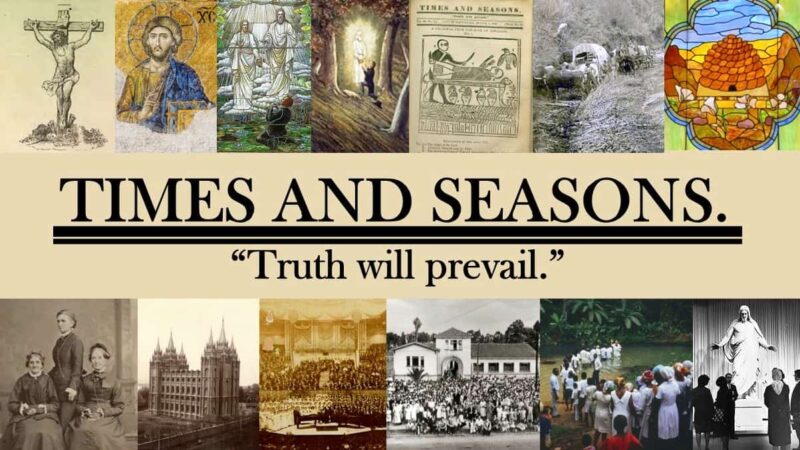![]()

The 2024 PRLS just dropped. Taken every 8 or so years, the PRLS is one of the primary sources of religious beliefs and practices of Americans. While there are other, larger and more consistent surveys that either have a larger sample size (the CES) or a larger range of questions (the GSS), the PRLS is unique in that it has a large number of specifically religious questions and a large enough sample size that we can get a significant number of Latter-day Saints.
I am slammed with work, so I don’t have time for more than a few cursory, drive-by-observations for now (but they’ve also released the microdata, so I’ll be chewing on this over the next year or so).
- The big story is, of course, that the decline of religion has levelled off. This confirms findings from the CES, so we now have two different large surveys telling us the same story.
- This survey also confirms the finding in other surveys that the gender gap in religion is closing, with women about as religious as men now according to some surveys, whereas historically women have been more religious. It appears that according to the PRLS women are maintaining a slight religious attendance edge. Some background on this, for years a myth has been very popular that women are leaving religion (or, in some variations, the Church of Jesus Christ of Latter-day Saints in particular) in droves because patriarchy. However, the inconvenient truth is that in Christian societies women have been more religious than men for quite some time. Now that we’re seeing the gap close or even possibly reverse in some surveys I suspect the old narrative will rear its head, but keep in mind that you have to really squint to see any kind of a gender difference in favor of men, so no, we’re not living in the Handmaid’s Tale.
- We’re still holding at 2% of the population in terms of self-identification. However, in terms of year-to-year changes in percent LDS, the CES is probably superior since it has a larger sample size and more years.
Where the PRLS really shines is comparing our beliefs and activities to others. For this the PRLS has already generated a really handy tool that allows you to compare us against the average American. The results are about what you would expect, and there are some fun gems. I’ll leave the link here for interested readers to try it out.
- If anybody wants to give us guff about not taking the bible seriously, 80% of Latter-day Saints think it’s important versus 44% of Americans.
- There are about as many anti-evolutionist Latter-day Saints as there are in the general population (about 17% believe “Humans have existed in their present form since the beginning of time.”)
- 90% of Latter-day Saints believe “God gave humans a duty to protect and care for the Earth, including the plants and animals.” This is much higher than the national average (but I don’t know offhand how much of the difference is due to differences in belief in God).
- 56% of Latter-day Saints “feel the presence of something from beyond this world” at least once a week. For the US it’s 33%.

Comments
3 responses to “What do Latter-day Saints Believe? Insights from the 2024 Pew Religious Landscape Survey”
Found it interesting LDS was most likely to feel peace or have spiritual experiences weekly. Most likely to be affiliated with a congregation. Most likely to read scriptures or pray in a week. Most likely to find religion important. Most folks raised LDS stay in but it was just 54%. It seems like in the US the Church is only growing proportionally to the general population.
I don’t get why we are the most likely to deny climate change even with the heavy right wing political influence.
I did like the pro immigrant and pro open facing society answers. Missions and our history should keep us focused on the 2nd commandment more than the Trump xenophobia pull if members can keep their faith more important than their politics.
One other thought with degree attainment the pathways program should bump us up at some point but the continued focus on single partner earning plus more kids than average likely limits degree attainment and earning.
In other data If you look at BYU and salary and just compare the males to the Ivy League they are similar but so many women don’t end up working that BYU grads average salary looks more just above average.
Thanks for posting this, Stephen.
RL: I think we’re more likely, but as far as I can tell nobody has crunched the numbers to see which religious group is *most* likely.
The political stuff doesn’t surprise me. At the end of the day we are centered in a very right-wing part of the country (although even taking that into account we do tend to be more right-wing: http://archive.timesandseasons.org/2023/12/are-latter-day-saints-more-republican-because-of-where-they-live/index.html), but on some issues you can make the case that we are more liberal *once you take into account the fact that we’re more republican* https://www.deseret.com/opinion/2024/11/15/latter-day-saint-immigration-attitudes/.
I’m not as aware of the BYU earnings data, but I wonder how much of the gap is because of major. My understanding is that there isn’t much of an ivy-league salary bump in the softer fields, and the differential across majors is huge. (In terms of salary I’d much rather have an Utah State Bachelor’s in CS or construction management than a Yale philosophy degree). Anecdotally since we members have to prepare to support a family I suspect we’re more likely to enter into accounting and the like (the men at least) and less likely to spend a gap decade backpacking around Europe after getting a degree in Italian literature.